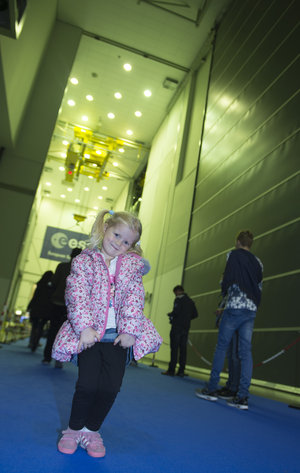

9: Europe’s largest satellite test centre
In the same way that individual components and systems are tested to ensure their readiness for the violence of launch and the vacuum and temperature extremes of space, the same is true of complete satellites.
That is the task of a 3000 sq. m cleanroom complex nestled in sandy dunes along the Dutch coast, filled with test equipment to simulate all aspects of spaceflight: the ESTEC Test Centre.
Its major infrastructure includes Europe’s biggest vacuum chamber, equipped with a Sun simulator with liquid nitrogen run through its walls to reproduce space conditions; Europe’s loudest sound system, used to blast satellites with simulated launch noise and Europe’s most powerful hydraulic shaker table, reproducing launcher vibrations equivalent to a major earthquake.
Next part: Taking control and staying in touch
(Photo: MetOp-C's payload module being lowered into ESTEC's Large Space Simulator)
ESA Basic Activities at Space19+
For ESA’s next Ministerial Council, Space19+, set for the end of this year, the Agency is asking Europe’s space ministers for a substantial investment for its core Basic Activities, helping to support a new generation of space missions as efficiently as possible. ESA’s Basic Activities have three main objectives: to enable the future through early stage research and development, commencing the Agency’s seamless grid of innovation; develop and maintain ESA’s common infrastructure and expertise; and, develop, preserve and disseminate knowledge for European capacity building and sustainable growth – inspiring and promoting creativity.





